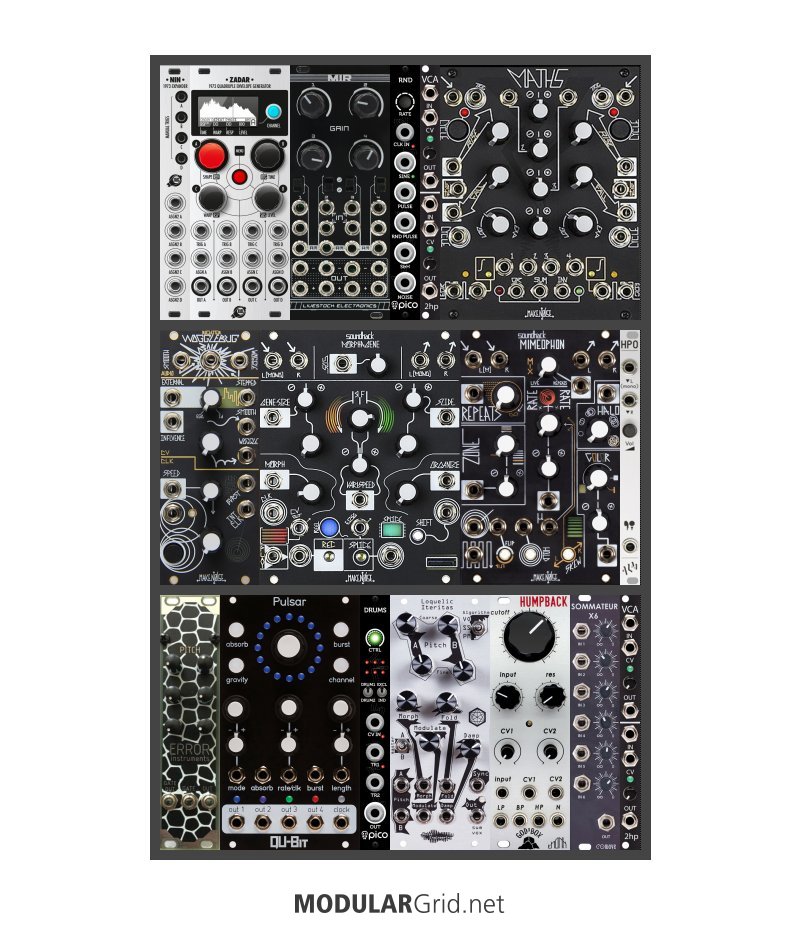Hi! Looking to get into modular stuff, been putting it off for years but some of the more recent Make Noise efforts and some other things have finally pushed me into starting to build a system. This is something that will be built up over a fairly long time, and as such things will probably change along the way, but this is the kind of system I'd be aiming for.
It's designed with the intent of running in 3 separate 4ms pod 48Xs, daisy-chained together, with each row representing an individual pod. The aim is to let me take 1 or 2 pods out with me during the day, without limiting my overall space at home. I'll build/buy a rack for them to sit on like a baby big system.
So with that out of the way, as you can see each row has a main "function" in mind. From the top we've got: modulation (2nd on purchase list), looping/granular stuff (this is going to be what I get first, with an intrfx to interface with my effects pedals and bass), and voices/tone generators for when I want to play 'music' and sequences and stuff (last, a KeyStep and VCV rack does me for now).
Just wondering if I've got the important stuff covered (enough modulation, enough VCAs, etc.) before I start buying things.
Lots of words I know, but any and all feedback is appreciated!

